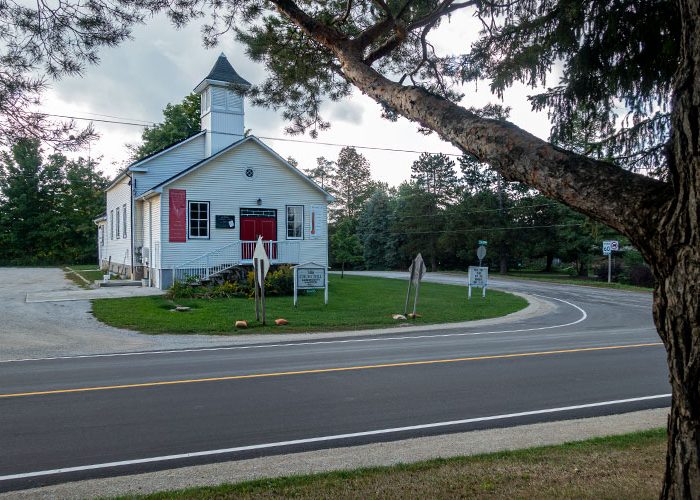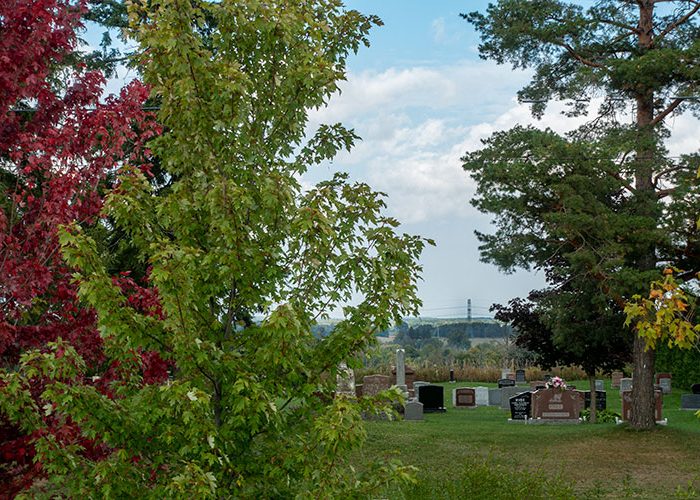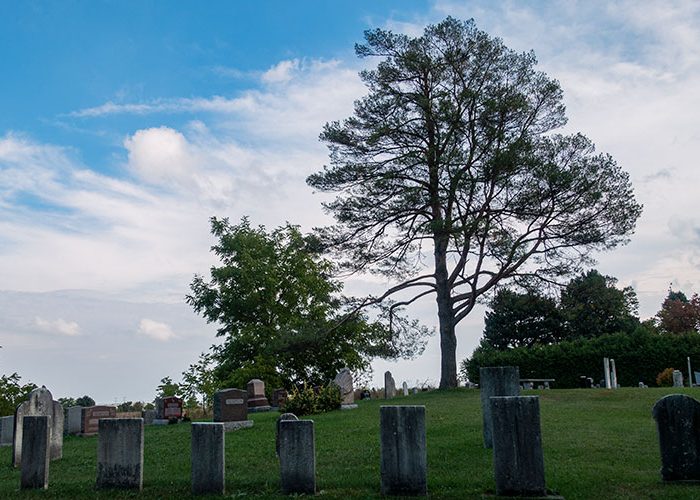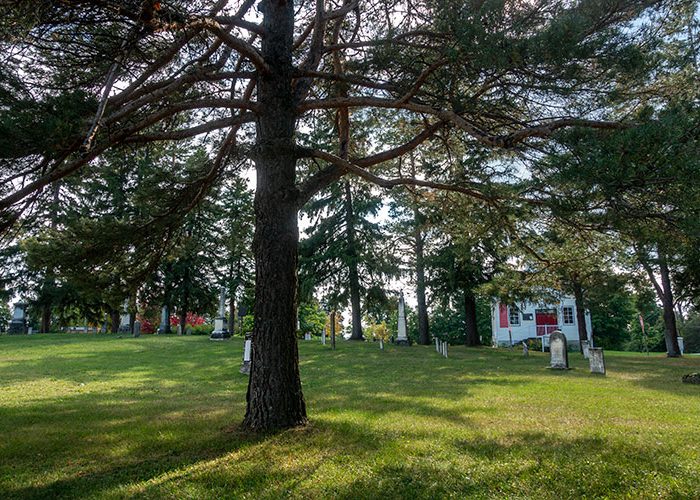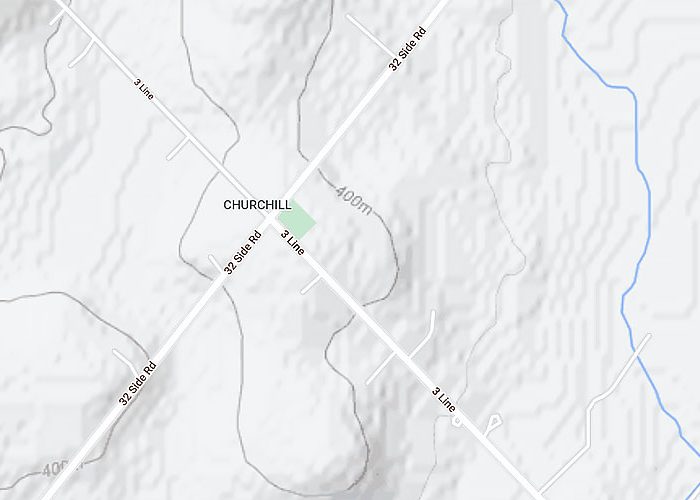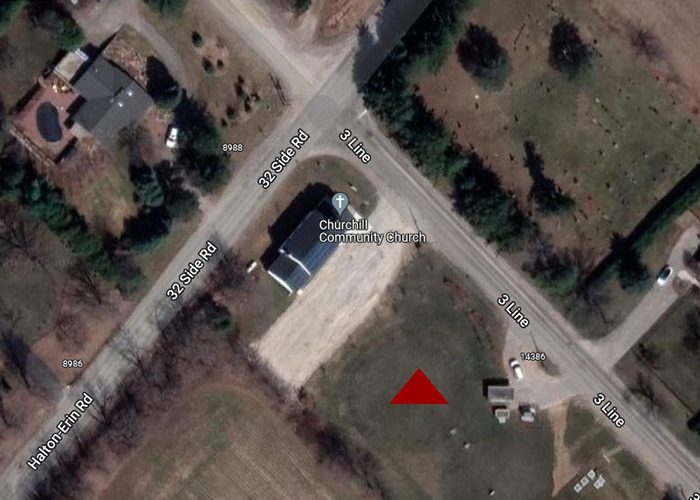Halton Hills highest peak sits at 414 metres, or 1358 feet in a small village of Churchill, just outside of Acton. To be exact, the Churchill Community Church and cemetery.
History: The Churchill Community Church Cemetary was founded in 1827 when Julia Ann, daughter of John Swackhammer died. It is a quiet resting place with a rather spiritual feel and beautiful views of the Ontario landscape.
From the small nearby Churchill church (1838) and the adjacent cemetery (1827) you will see the rolling farms and deciduous woodland. What you definitely won’t see are the scattered cedar or sedge swamps on the stone bedrock, typical for the Halton Hills landscape.
Ontario is a flat land with endless sky and endless plains, highlighted most notably by gullies, ravines and unassuming elevations, the most famous of which is the Niagara Escarpment.
The present-day appearance of the landscape of Halton Hills and all of Ontario is the result of glacial activity that took place during the Pleistocene (Quaternary) period, approximately 23,000 to 10,000 years ago.
At Churchill, the stone bedrock lies under the shale that was formed in the Ordovician Period, in the First Mountains, and dolomite, which was formed a little later in the Silurian Period.
The rock is 485-442 million years old, going back to the time when the first fish and the Dryozoic flora appeared and trilobites moved in great numbers.
Interesting facts:
Churchill. The highest elevation in Halton Hills: 414 meters, 1358 feet
Dundalk has the highest elevation of any populated place in southern Ontario at 526m 1,735 feet.
Algonquin. Southern Ontario High Point. 578 meters, 1896 feet.
The Ishpatina Ridge is the highest point in Ontario. 693 m / 2275 feet.
Mount Logan (Yukon) is the highest mountain in Canada. 5,959 m / 19,551 feet.
More: Peakbagger

